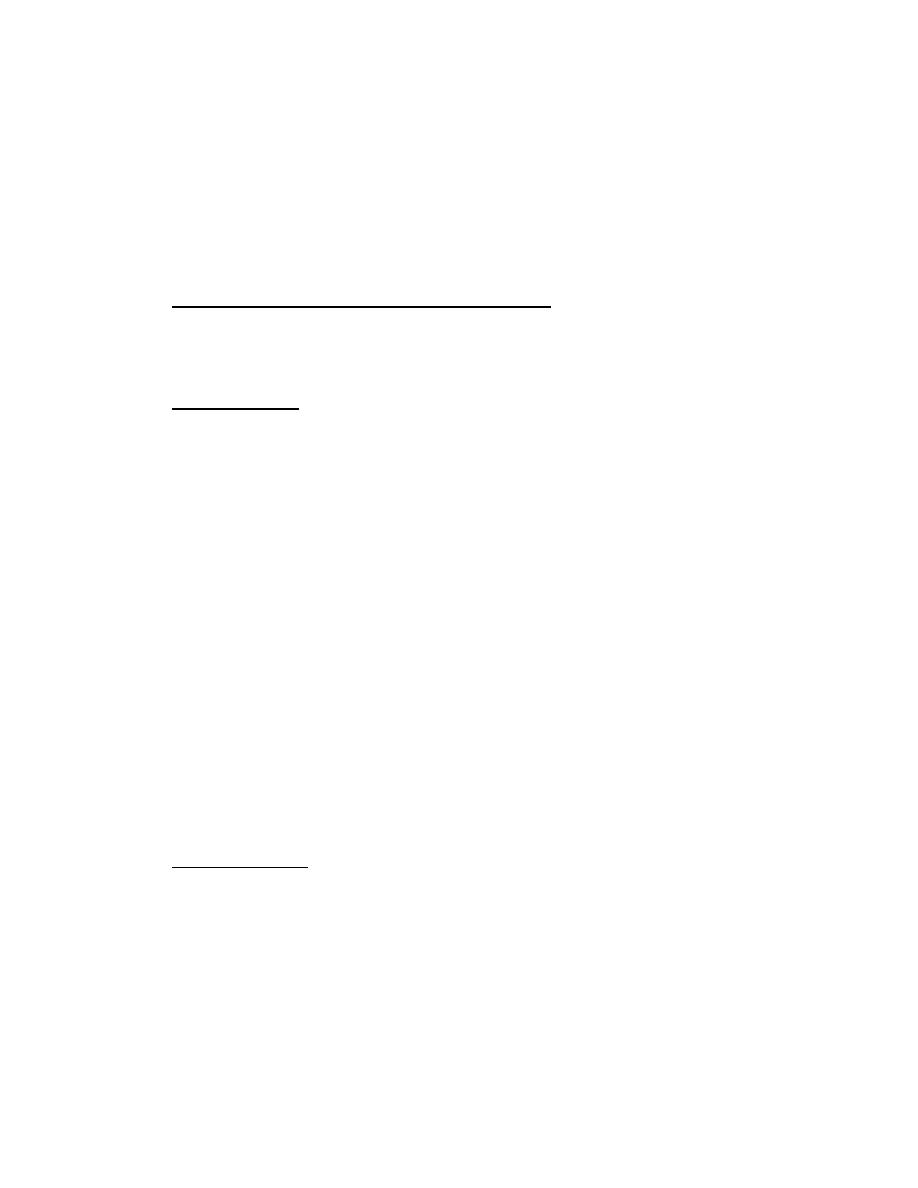
| Tweet |

Custom Search
|
|

|
||
 MIL-HDBK-1038
2) The stress range defined in paragraph 5.1.2.4 a) (3), for the
main hoist only. The upperworks and boom are positioned to produce the maximum
corner load.
The sizing of gudgeons, gudgeon pins, and float pins is determined by the
associated bushing design criteria. In the usual practical design situations, the
sizing of these components is governed by the mechanical design criteria of the
mating bushings, thrust washers, and thrust bearings.
5.2.10
Gudgeon Thrust Washers and Thrust Bearings. The design load for these
components assumes only the direct vertical loads. (The effects of moments and
horizontal loads are assumed to be taken up by the pairs of bushings on individual
gudgeons.) The governing design load for each thrust washer or thrust bearing is
determined by the maximum load obtained from paragraph 5.2.9 above.
5.2.10.1 Thrust Washers. Gudgeon thrust washers are required to be submerged in
an oil bath to ensure an oil film on the rubbing surfaces with minimal relative
motion. The maximum bearing pressure is limited to 2000 pounds per square inch,
based on the net face area (face area minus the area of the oil grooves). The
recommended oil groove pattern is a set of three or four intersecting circular
grooves. The thrust washers should be flat and at least 3/4 inch thick. The oil
grooves should be 1/4 inch wide by 1/8 inch deep, and without sharp edges. The
mounting of the thrust washers should be by means of countersunk screws, secured
against loosening. The thrust washer rubbing surface may separate from its steel
contact surface during lift-off conditions. The recommended material for thrust
washers is high-leaded bronze, conforming to Copper Alloy UNS Number 93200.
Thrust washers of non-metallic materials may be used only when approved
by NCC. Compared to copper alloys (bronzes), these materials have lower allowable
bearing pressures and lower friction coefficients, and usually require no
lubrication.
Thrust washers which serve only to separate adjacent surfaces of
equalizers and gudgeon assemblies (in the absence of bushing flanges) may be of
any high-leaded bronze. Maximum bearing pressure due only to maximum lateral load
obtained from paragraph 5.2.9 above, is limited to 50 percent of the material
yield strength. However, the difference between the inside and outside diameters
must be at least 6.0 times the wall thickness of the adjacent bushing. The
minimum thickness of these thrust washers should be equal to the wall thickness of
the adjacent bushing. These thrust washers are free to spin and do not require
any lubrication.
5.2.10.2 Thrust Bearings. Gudgeon thrust bearings are required to be of either
the spherical roller type or three-row roller type. The installation of spherical
roller type thrust bearings must maintain the races in contact with the rollers
during lift-off conditions; any separation may take place only at the seating
surfaces of the races. The three-row roller type bearings consist of three
independent rows of rollers specifically designed for thrust loads, overturning
moments, and radial loads. Bearing selections must be made on the basis of their
static capacities. The bearing manufacturer's mounting and installation criteria
must be followed. Manufacturers of the three-row roller type bearings specify the
required sizes and grades of mounting fasteners. For tapped hole connections, the
tapped holes must be made in the bearing rings. Thrust bearings must either be
submerged in an oil bath or be grease lubricated.
139
|
 
|
|
 |
||